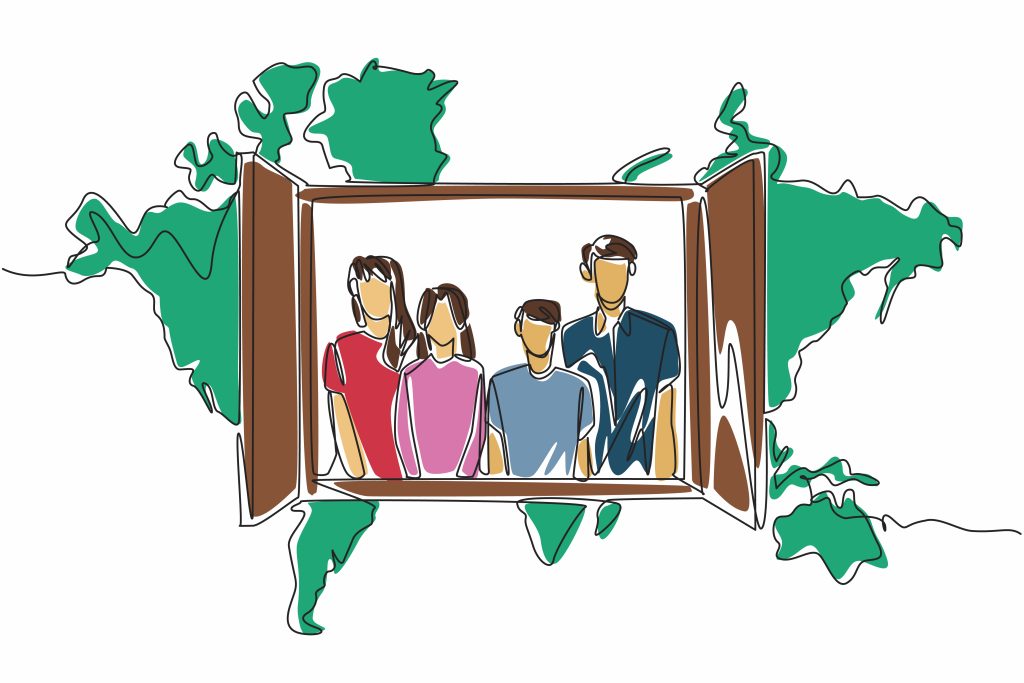Case Studies and Reflective Tools
Case Study: They Don’t Come Off As Being Extraordinarily Culturally Competent

During one of my research interviews, I got to learn from Adrienne Thomas, a Black woman living in a big city in the Midwest. Adrienne and her family worked with seven different EI providers over a year and a half. When I asked about them, she said, “They are coming out of upbringings and intense educational experiences that are all White. For many of them, the first interactions they have with Black folks is a clinician, and then those experiences reinforce the biases they don’t even know they have.”
After our conversation, I thought a lot about how true this was for me. I grew up in a predominantly White college town where I had all-white friends, all-white teachers, and predominantly white neighbors. Almost everyone in my community was just like me.
Despite attending the University of Illinois in Chicago, a relatively diverse university, my identity and ways of being continued to be reflected back to me. Almost all my professors were white, my sorority sisters were all white, and most, if not all, of my classmates in the school of social work were white. Just like the therapists Adrienne worked with in early intervention, I hadn’t had a single meaningful relationship with Black people until I started my first social work internship.
After undergrad, I wanted to help people so I went back to UIC for a master’s degree in early childhood special education. The program boasted an “urban” education program that prepared teachers to work in Chicago public schools. Again, most of my professors and peers were white. My professors of color were recent immigrants to the United States. None of them were Black. It wasn’t until I did my student teaching that I interacted with Black teachers.
There wasn’t anything in my undergraduate or graduate curriculum that explicitly taught me about the dominant American culture or asked me to examine my own family culture. When I completed my student teaching and moved into early intervention, there were many required trainings about how to do discrete parts of the job. Not a single one of the required trainings related to cultural competency or working with families with identities different from my own. As a developmental therapist in Chicago’s Rogers Park, I was immediately assigned to go into the family homes of folks whose language, religion, and cultural practices were different from my own.
- What are the identities of the people in your immediate family and your closest friends? How do their identities and cultural and linguistic backgrounds compare to your own?
- Pretend you are planning a large party. If you invited one hundred people, what would the identity make-up of your guest list be?
- If your friend group is primarily made up of people who share their identities with you, why do you think that is? If your friend group is more integrated than most White Americans, why do you think that may be?
- Lack of Proximity is a contributing factor to why many people find themselves socializing only with people like themselves. According to The Roots of Structural Racism Project, about 80% of American cities are more segregated now than they were in 1990. Humans create community as a result of a shared connection and often sort themselves into friendship groups by one or more of these identities. Think back to what you learned in Chapter Two. What do you think are some of the sociohistorical explanations for why cities are so segregated and White people have mostly White Friends?
- How do you think that EI practitioners’ lack of experience with Black people impacted their ability to provide culturally responsive services to the family?
- Think about all the stereotypes that you have about Black people. How do you think that these stereotypes impact your implicit biases about Black families?
To learn more about why American cities and neighborhoods are so segregated, see the following:
Nonfiction Video
Housing Segregation and Redlining in America: A Short History
Nonfiction
Segregation By Design: Local Politics and Inequity in American Cities
The Color of Law
Young Adult Nonfiction
Unequal: A Story of America Eric Dyson
Theatre
A Raisin in the Sun: Hansberry, L. (1997).
To do a deeper personal reflection about your relationship to Whiteness, Dominant American Culture, and White Supremacy, I recommend Layla Saad’s Me and White Supremacy Workbook.
Citations
https://belonging.berkeley.edu/roots-structural-racism
When asked to list 100 of their friends, most White Americans have about 91 White friends and only one Black friend. About two-thirds of White Americans have only White friends (Public Religion Research Institute, 2022).

